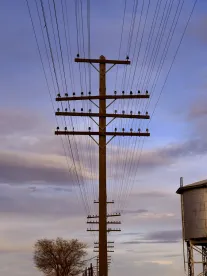911 Location-Accuracy Petition
On September 28, CTIA filed a Petition for Reconsideration of the FCC’s Sixth Report and Order, which required nationwide carriers to deploy z-axis location accuracy technology nationwide by April 2025, and established a z-axis metric of plus or minus three meters for 80 percent of indoor 911 calls (Vol. XVII, Issue 26). The first benchmark for Commercial Mobile Radio Service (CMRS) providers mandates z-axis location accuracy technology deployment in the top 25 Cellular Market Areas (CMAs) by April 2021. CTIA’s Petition stated that z-axis location solutions should be validated in advance of the first benchmark, and sufficient testing has been nearly impossible due to COVID-19 restrictions. Two vendors (NextNav and Polaris Wireless) rely on network-dependent, barometric pressure sensor-based technology that could be deployed by the April 2021 benchmark, but CTIA noted these solutions will not be integrated into the devices used by most wireless 911 callers in the top markets.
3.45-3.55 GHz Band Auction
On October 2 the FCC released a Report and Order and Further Notice of Proposed Rulemaking seeking comment on its proposal to allocate the 3.45-3.55 GHz band spectrum for flexible-use service and seeking comment on a non-federal and federal coordination scheme as well as technical rules, licensing, and competitive bidding rules for the band (Vol. XVII, Issue 37). The FNPRM proposes the use of geographic area licenses for the auctioned spectrum, but declined to identify which type of geographic areas will be used for new authorizations. The R&O also states that non-federal radiolocation licensees and amateur license holders in the 3.45-3.55 GHz band may continue to operate until 90 days after the close of the auction of the band, which is anticipated to occur in December 2021. The band is currently used by the Department of Defense for high-powered radar systems on fixed, mobile, shipborne, and airborne platforms. Comments and Reply Comments are due 30 and 45 days after the R&O has been published in the Federal Register.
Station Discontinuance Rules
Last week the FCC’s Final Rule implementing changes to the Commission’s station discontinuance rules became effective, following a nearly three-year period during which the Final Rule was under review by the Office of Management and Budget. Prior to the effective date for the Final Rule, wireless radio licensees were subject to different permanent discontinuance rules depending on the radio service of the licensee’s system. The Commission’s new rule replaced “disparate service-specific rules dealing with permanent discontinuance with a standardized rule” for all wireless radio service licensees. For geographic-area licenses, authority will automatically terminate after 180 days of consecutive non-operation. For site-based licenses, authority will terminate automatically after 365 days of non-operation.
Localities and Utilities Request Rehearing of 2018 Pole Attachment and Small Cell Orders
Last month a number of localities and utilities filed petitions with the U.S. Court of Appeals for the Ninth Circuit seeking en banc review of the court’s decision to affirm the FCC’s rulings on overlashing, preexisting safety violations, self-help in the electric space, and ILEC rates, and certain elements of the 2018 Small Cell Order (Vol. XVII, Issue 33). The localities noted that the three-judge panel that issued the decision split on the question of whether the FCC acted lawfully in limiting cost recovery to what localities may charge for occupying rights-of-way and poles, as opposed to market value of the access, and stated that the panel’s decision contravened statutory text and the court’s own precedent by upholding the FCC’s new interpretation of “effective prohibition.” The American Public Power Association reiterated that the FCC has no jurisdiction over attachments to public power utilities’ poles, and stated that public power utilities have no regulatory authority over access to public rights-of-way.
Timothy A. Doughty, Kathleen Slattery Thompson and Adam (AJ) Reust contributed tho this article.







 />i
/>i

